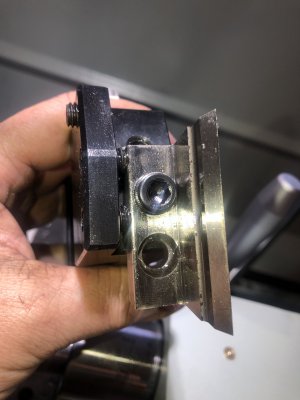- Joined
- Sep 8, 2019
- Messages
- 4,392
Looks good! Most of what I do is metric. I don’t mind keeping the half nuts engaged and reversing, it doesn’t seem any slower than using the threading dials once you get some practice.
What kind of threading tool is that? I already bought an Arthur Warner on edge holder, but that looks interesting.
Here is the link to the threading tool:
Aloris CXA-8
www.ajaxtoolsupply.com
and blade:
High Speed Threading Blades, 60º, P-6
www.aloris.com


